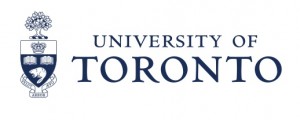 TORONTO (June 30, 2009) – MaRS Innovation (MI) and the University of Toronto (U of T) are pleased to announce that they have entered into an agreement to collaboratively commercialize a novel sustained release formulation of nitric oxide (NO) for applications in wound healing, including diabetic ulcers.
TORONTO (June 30, 2009) – MaRS Innovation (MI) and the University of Toronto (U of T) are pleased to announce that they have entered into an agreement to collaboratively commercialize a novel sustained release formulation of nitric oxide (NO) for applications in wound healing, including diabetic ulcers.
“There are 300 million diabetics worldwide, of which some 15 per cent develop troublesome foot ulcers. This wound healing technology is extremely exciting, making it an early commercialization opportunity that MaRS Innovation has identified as being a potential win for some 45 million diabetics globally,” said Dr. Raphael (Rafi) Hofstein, president and CEO of MaRS Innovation.
Briefly, this disruptive technology that facilitates continued therapeutic release of NO over a two-week period has been developed by Dr. Ping Lee, professor at the Leslie Dan Faculty of Pharmacy and GlaxoSmithKline Chair in Pharmaceutics and Drug Delivery at U of T.
The role of NO in various biological applications, including wound healing, has been well documented for some time. However, widespread clinical utility of NO has been limited by the short duration of NO release and its half-life of two to four seconds. Although there have been other sustained release NO formulations in preclinical development, stability and duration of NO release have hampered further development.
Preliminary data demonstrate a therapeutic benefit of this novel technology developed at U of T in diabetic ulcers with a single administration. NO also has a dual mechanism of action – not only does it enhance wound quality and closure rates, but it can also act as an anti-infective agent, which is also an important clinical property in wound healing.
“My co-inventor Dr. Yan Li and I are very enthusiastic about the development of this technology as well as working with MaRS Innovation in order to commercialize this important discovery,” said Lee. “We have encouraging animal results that could translate into potentially beneficial, long-lasting effects in patients with a single application.”
“This is one of many new commercialization ventures that will be initiated by MaRS Innovation, our partner in commercialization of research with 13 other academic institutions across the Greater Toronto Area,” said Paul Young, U of T’s Vice-President, Research. “We at U of T are delighted that this innovation from Dr. Lee will be taken to the marketplace to the benefit of society and the economy of Ontario and Canada.”
With the launch of this second commercial opportunity, MaRS Innovation will continue to aggregate the exceptional science of its institutional members by being a one-stop commercialization centre for industry, entrepreneurs and investors. MaRS Innovation is expediting the transformation of the Toronto-based research into a powerful commercialization engine.
“MaRS Innovation is deeply committed to facilitating strategic research collaborations with industry partners, strengthening the innovation capacity of Canadian industry through adoption of new technologies, and launching a new generation of robust, high-growth Canadian companies that will become global market leaders,” added Hofstein. “We look forward to working closely with all of our institutional members and to continue to jointly announce exciting commercial opportunities.”
About MaRS Innovation:
MaRS Innovation provides an integrated commercialization platform that harnesses the economic potential of the exceptional discovery pipeline of 14 leading Toronto academic institutions. MaRS Innovation is a non-profit organization with an independent industry-led Board of Directors, funded through the Government of Canada’s Networks of Centres of Excellence and contributions of its member institutions.
About the University of Toronto (U of T):
The University of Toronto has assembled one of the strongest research and teaching faculties in North America, presenting top students at all levels with an intellectual environment unmatched in breadth and depth on any other Canadian campus.
U of T faculty co-author more research articles than their colleagues at any university in the US or Canada other than Harvard. As a measure of impact, U of T consistently ranks alongside the top five U.S. universities whose discoveries are most often cited by other researchers around the world. The U of T faculty are also widely recognized for their teaching strengths and commitment to graduate supervision.
Established in 1827, the University of Toronto today operates in downtown Toronto,
Mississauga and Scarborough, as well as in ten renowned academic hospitals.

